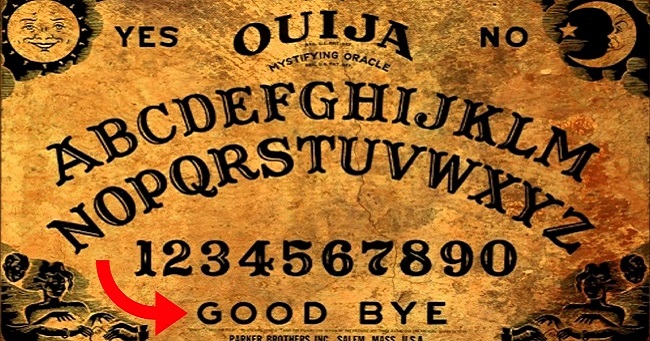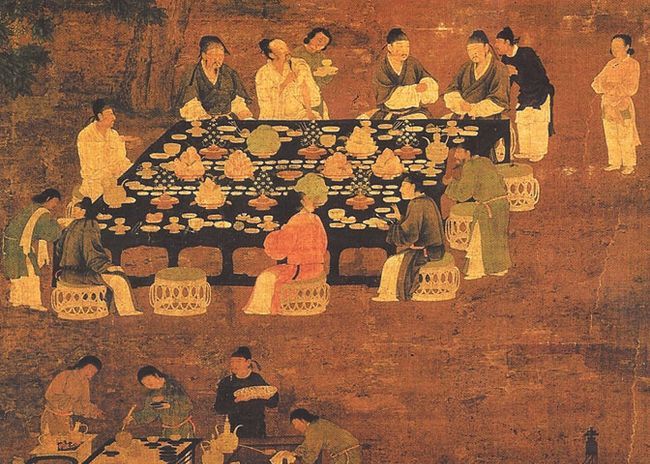


On the surface, an Ouija board is just a small plank of wood inscribed with letters, yet this item is one of the most famous objects in the recent history of man enshrouded in mystery, fear and even awe. While there are many who swear by the authenticity of an Ouija board, to others it is just a tool for entertainment. How one regards an Ouija board is directly dependent on your perspective of personal belief. The Ouija board has embedded itself in American culture with an interesting history of its inception till modern times. Here are 7 facts about the Ouija Board that not many know about.
The Ouija Board was not officially named till the late 1800’s. The first mention of a writing tablet in history dates back to 1100 AD in ancient China. Known as Fuji, it translated as “planchette writing” which was used for contacting the dead. The board was only used in special ceremonies and under supervision. During the Song dynasty, entire scriptures were said to have been written using this method that lasted between 960 – 1279. The practice was stopped by the Qing Dynasty in 1600.

Image Source: www.shared.com
During the civil war in America that took a toll on thousands of lives, several people turned to spiritualism in hopes to contact the other side. Families held table turning parties and séances where people would place hands on a table where questions were asked and alphabets called out in hopes of acquiring an answer from spirits present. The table would supposedly turn when a spirit wanted a specific letter. Many people indulged in such activities as it wasn’t considered occult in nature. Even the wife of President Abraham Lincoln, Mary Lincoln was reported to have conducted séances after losing her 11-year-old son to fever. Scandals involving charlatans and fake medium saw a gradual decline in the practice.
Image Source: www.theghostdiaries.com
This is an intriguing among facts about the Ouija Board. A common misconception implies that the name of the Ouija board is a combination for “yes “in French and German but that is not true. The Ouija board’s first patent was by the Kennard Novelty Company in 1890 but it did not have a name for the board. It was during a session involving the owner of the patent Elijah Bond, his sister in law Helen Peters (an established medium) and friends that the board got its name. The party asked the board what it wanted to be named and the word OUIJA was spelt out by the board. When asked what it meant, it replied through letters, “Good Luck”.
Image Source: www.evangelicaloutreach.org
Robert Murch a historian who studied the Ouija Board for 20 years claimed that the board was tried, tested and approved by the US patent office which turned out to be true. Elijah Bond accompanied by his lawyer Peters from Baltimore and owners of the company held a demonstration for the Patent officer whose name was withheld from the group. He asked the board to spell out his last name which it did and correctly at that.
The officer was visibly shocked and left the room white-faced and shaken. He awarded the patent soon after. But!! One fact also needs to be put forward that Bond himself was a practicing patent agent who could have known the name.
Image Source: www.gothic.life
Although the board was a success, the owners of the board mysteriously deteriorated in life. In 1893, the patent was held by one William Fuld but though the board was a success, Fuld himself spent his life fighting lawsuits over the name and efficiency of the board. In 1920, it was reported that Fuld received a message from the Ouija board which instructed him to build a new factory in Baltimore. Fuld tragically died during the construction when he fell through a safety rail and plunged down three storeys to his death. Fuld’s children inherited the Ouija board which they then sold to the parkers in the 1940’s.
Image Source: www.rekanbola.com
The majority of people don’t believe in the working of the Ouija board. Several psychologists attribute the working of the board and other things like water divining to what is known as ‘ideomotor phenomenon ‘. This is a phenomenon performed unconsciously by ones brain which takes over muscle control to perform an action. Those believing in the Ouija board will unconsciously move the planchette to the letters they want to hear. Subjects were tested with neurotransmitters attached to the brain which recorded brain waves during Ouija board activity. The results totally backed the theory that it was indeed a person’s brain working to that effect.
Image Source: www.relativelyinteresting.com
This is one controversial fact about the Ouija board that is false. There are rumors stating that the Ouija board is banned in certain countries which aren’t entirely true. Although certain countries have laws against fraudulent practices of witchcraft, the Ouija board doesn’t fall in the same category despite various religions and even Satanism warning against the use of Ouija boards.
Image Source: www.hubstatic.com